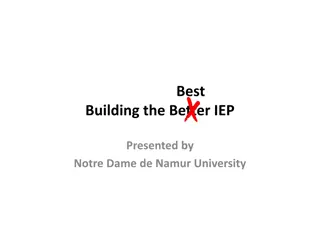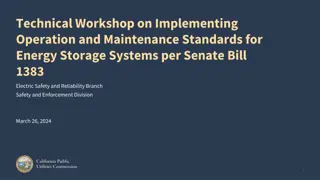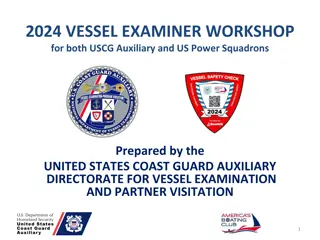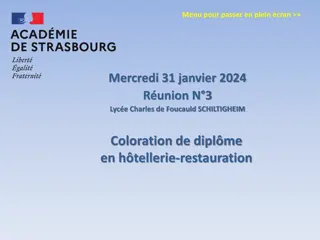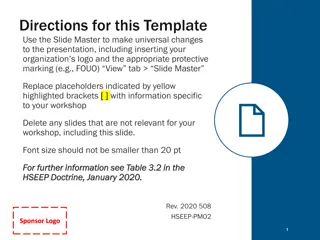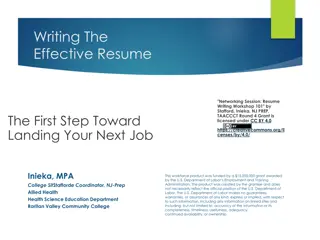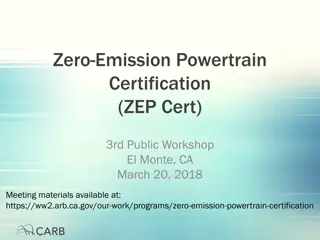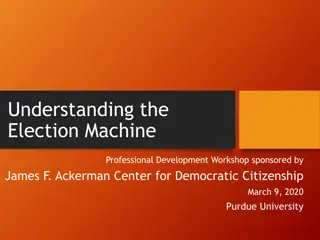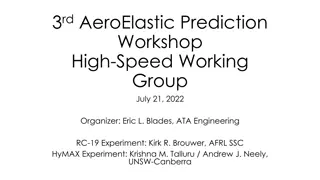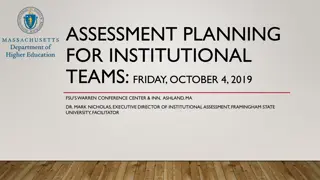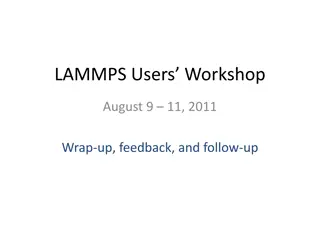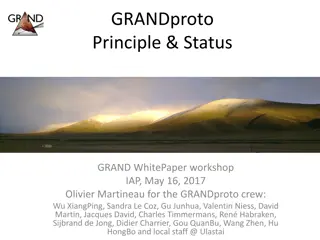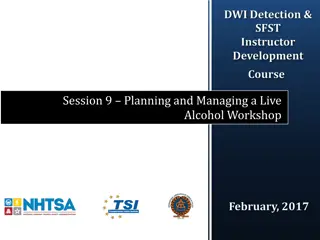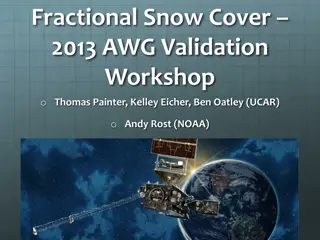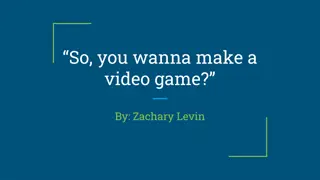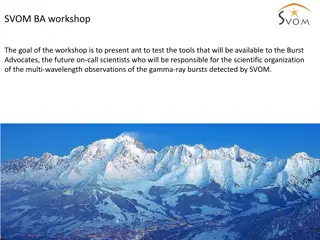
Craft Unique Twine Assignments for Engaging Learning
Explore the pedagogical applications of Twine, a versatile tool for active learning. Discover tips for crafting impactful Twine assignment prompts across various subjects such as English/Language Arts and world languages/ESL.
Download Presentation

Please find below an Image/Link to download the presentation.
The content on the website is provided AS IS for your information and personal use only. It may not be sold, licensed, or shared on other websites without obtaining consent from the author. If you encounter any issues during the download, it is possible that the publisher has removed the file from their server.
You are allowed to download the files provided on this website for personal or commercial use, subject to the condition that they are used lawfully. All files are the property of their respective owners.
The content on the website is provided AS IS for your information and personal use only. It may not be sold, licensed, or shared on other websites without obtaining consent from the author.
E N D
Presentation Transcript
Exploring the Pedagogical Applications of Twine Katherine Tsan, OER Coordinator/Fellow/Educational Technologist, Baruch and York Colleges-CUNY Creative Commons License This presentation is licensed under a CC-BY-SA Creative Commons Attribution-ShareAlike 4.0 International License
A vehicle for public scholarship/active learning that puts the learner in control helps students develop empathy by featuring a person experiencing hardship, as in this game spurs on creativity by thinking through alternate scenarios reinforces messages of individual agency, cause and effect helps recall content (can make small games of small moments) considers major issues of our time and projects potential futures so: can lead to problem-solving activities to help change behavior and improve outcomes based on decisions made now This page modifiesDLA101.org by The Great Lakes Colleges Association, licensed under a Creative Commons Attribution-NonCommercial-ShareAlike 4.0 International License.
Tips for crafting Twine assignment prompts estimate how long it will take to teach the tool depending on student class size, technological savvy, etc. and how to scaffold mastery. have a list of three or four goals (technological, conceptual) to take away and expectations about word limits, the look of the page (for ex. audiovisuals) include links to the Twine Cookbook and Wiki tutorials add a grading rubric, such as the one here for this history assignment assign a reflection piece: what did (not) go well and lessons learned
English/Language Arts Recreate a famous story from literature such as the example below from Charlotte Bront s Jane Eyre (1847) but add a twist in the plot or an alternate ending. Or see this postmodern literary experiment. Upon coming back to Thornfield Hall, the now well-off Jane Eyre, who has friends, family and recently got a marriage proposal from the clergyman St. John Rivers, sees the estate burned to the ground and surreptitiously watches the physically handicapped Mr. Rochester. Recreate Jane s next steps/decisions in the book and also add a couple of new scenarios that lead to very different outcomes. Imagine Jane transported to 1947 or the present day.
World language/ESL Take the reader through a relatable story featuring three choices, only one of which is grammatically correct. Have the incorrect choices lead to a dead end with an explanation of the mistake. Make the examples gradually more complicated, as in this story. Describe a relatable experience, e.g. going to see a Halloween Parade/D a de Los Muertos/Bastille Day celebration from the point of view of a young person, sprinkling in cultural references and light colloquialisms in English/the target language.
History Create step-by-step timelines of major historical events, adding variations depending on how a vote/battle/case might have turned out as in this example. Or trace the pathways of a major or minor participant (real or imagined) in a historical event. Describe an episode from your family history: how an ancestor immigrated to the U.S./beat great odds/made a decision while exploring forks in the road leading to different outcomes. Imagine you are Montezuma being told of the arrival of Hern n Cort s. Branch the Aztec emperor s attempts at intimidation- appeasement-friendship-making war-coming to terms.
Librarianship/Archival Science Describe a decision-making process in a sphere of library science (including information librarianship), e.g.: deciding whether a resource is primary, secondary or tertiary; approaching online information through a critical lens; processing an archive. Explain how to process a collection from the point of view of an archivist, including the technical aspects but the organization, sense-making and selection of information (explaining how those decisions can lead to different outcomes) the goal being to understand that archival collections are mediated resources. * See my Twine game about Open Educational Resources, The Old R gime and the OER Revolution on Baruch's TeachOER website.
Physics/Engineering/History of Science Start with a physics or engineering problem which, if solved correctly (consider having two or three answer options), leads to another word problem/module. Played to the end, this presents a complete view of a theoretical or applied concept. Based on an excerpt read in class from the journalist Adam Higginbotham s 2019 historical account Midnight in Chernobyl, describe the step-by-step events that led to the explosion of Reactor Number 4 on April 26,1986 starting from decisions made by various Soviet atomic organizations in the 1970s to human error the night of the disaster, building in alternate scenarios based on diverging witness testimonies, all leading, ultimately, to the same tragic result.
Biology/Life Science Develop branching scenarios of divergent outcomes based on changing scientific variables. Or introduce variables that may have an effect on global phenomena such as climate change and introduce various ways in which the situation might play out. Describe pathways for normal versus abnormal cell evolution with different variables or factors leading to different scenarios.
Sociology/Anthropology Create branching scenarios of the future of the modern human species based on and polemicizing with theories by public intellectuals and articles in the news about developments in genetics, technology and medicine. In Homo Deus (2015), historian Yuval Harari analyzes patterns of past and current behavioral trends to suggest possible and bleak scenarios for our future as upgraded humans.Sketch the scenario Harari suggests of Sapiens developing into a new, unhappy and isolated, species but also introduce alternative scenario(s) based on human cooperation, idealism and altruism.
Arts/Performance Arts Create an explanation of the steps used by an artist/restorer/performance artist in getting to their finished product, decisions made and obstacles faced on the way. You are the artist pair Christo and Jeanne-Claude, who would like to wrap the Arc de Triomphe in shimmering golden fabric. Develop a branching narrative of your encounters with 1) fabric wholesalers 2) purveyors of bureaucratic red tape, e.g. the Paris city government 3) potential funders galleries, private financiers.
Business Operations Create a decision-tree illustration of a business organization s processes to analyze how things should be carried out to achieve better results, as in this example. Simulate how things in small business X work with branching scenarios such as working group active yes or no, work with company as a colleague or as a client, include meetings leading to different outcomes, etc.
Have an idea for a prompt or wish to share your own Twine teaching game? Please get in touch! Katherine Tsan, OER Fellow, Center for Teaching and Learning, Baruch College-CUNY and OER Coordinator/Educational Technologist, York College- CUNY Center for Teaching, Learning and Educational Technologies katherine.tsan@baruch.cuny.edu

